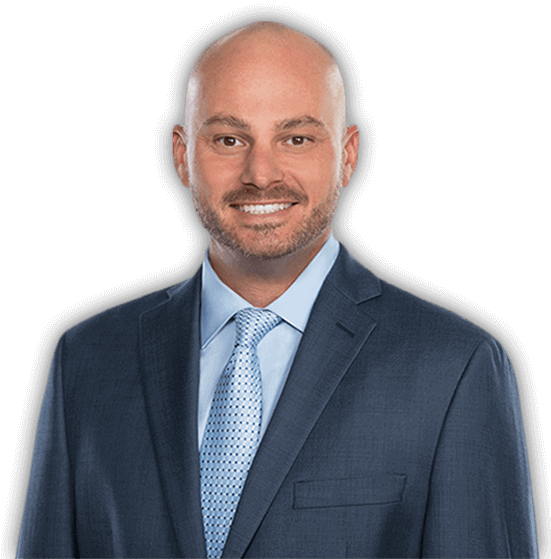Atlanta is filled with highways, byways and one-way streets that can be confusing and stressful even for native-born drivers. Of course, because of Atlanta’s high number of tourists and transplants, traffic can get even worse. Not to mention, Atlanta’s infrastructure isn’t exactly designed for the population of 5.8 million who live in the metropolitan area.
Eight of the 10 deadliest roads in Georgia are in the Atlanta metropolitan area. What’s more, a few of the interstate interchanges in the area, including Spaghetti Junction, are considered some of the worst semi truck bottlenecks in the nation.
With so much traffic, the risk of being in a car accident is high. If you’re injured in a car wreck in Atlanta, you may be entitled to compensation. An experienced Atlanta car accident lawyer can help you explore all of your legal options, including whether you are entitled to a greater settlement than what the insurance company offers you.
The Most Common Types of Car Accidents
Car accidents can happen at any time, and for any reason. In Atlanta, there are a few different types of collisions that are more common than any other. Most accidents are caused by driver error, but natural phenomena and car defects can play a role in some collisions.
Here are the four most common types of car wrecks in Atlanta:
1. Rear-End Collisions
Rear-end collisions are the most common type of wreck you’ll see on Atlanta’s roads. It may happen when traffic suddenly stops on the highway, or at an intersection when a driver behind isn’t paying attention to the traffic in front of them. The good news is, the majority of rear-end collisions aren’t fatal, since they happen at lower speeds.
Unfortunately, however, they can result in serious injuries, such as concussions and broken bones. Though there’s no sure way to prevent being rear-ended, there are ways you can keep from rear-ending someone else. Be sure to follow the speed limit, and leave at least a three-second buffer between you and the car in front of you.
2. Low-Speed Collisions
Low-speed collisions usually happen in bumper-to-bumper traffic or in areas like parking lots, when people aren’t moving very fast (as the name suggests). Low-speed collisions are defined as those that happen at less than 10 miles per hour. Though they may seem minor, low-speed collisions can cause serious injuries.
If you are in traffic, be sure to pay attention to what’s going on around you. Put down the phone, leave the radio alone and stay alert. If you’re in a parking lot, back out slowly to avoid hitting any other car. Even better, back into your parking spot so you can you can just pull out forward and see any cross traffic clearly.
3. Side-Impact Crashes
Side-impact collisions can be divided into two categories: T-bone crashes and sideswipes. T-bone crashes happen when one car collides nose-first into the side of another car. These collisions most often happen at intersections when one driver runs a red light or a stop sign. T-bone accidents often result in serious injuries.
Sideswipe accidents, on the other hand, usually happen in multi-lane traffic. One car may not see another as they try to change lanes, or they may drift in their lane and swipe a car in the next lane over. These types of accidents often don’t result in serious injuries, but in the event a sideswipe accident happens at high speed, it may cause a car to leave the road or into another car.
4. Single-Vehicle Collisions
Single-vehicle wrecks happen when a driver collides with a stationary object, like a telephone pole, a tree or even a parked car. These can be dangerous because they often happen to younger drivers at high speeds. They may also happen due to hydroplaning, turning to fast or for other reasons.
Single-vehicle collisions are almost always the fault of the driver, but there are instances in which someone else may be at fault. For instance, if your brakes fail in a new car, the manufacturer may be at fault. Or, if you had to swerve to avoid a pedestrian or bicyclist suddenly entering the road, the other person may be at fault.
Damages You Can Recover After an Accident
If you’re involved in a car accident in Atlanta that wasn’t your fault, you may be entitled to recover compensation, or damages, beyond the low ball offer you’ll probably receive from your insurance provider. Damages are divided into two general categories: economic and non economic.
Economic damages are those to which an objective dollar amount can be assigned. These may include:
- Medical bills, both present and future
- Car damage
- Lost wages, both present and future
- Household services
- Rehabilitation
And more. Your auto accident attorney will review all of your bills and expenses to help you figure out what you can get compensation for.
None conomic damages are those that are much more subjective. You won’t be able to provide bills or invoices to recover these types of damages. Instead, your Atlanta car accident attorney will help you calculate what you’re owed, and fight in or out of court to make sure you get the full compensation you deserve. None conomic damages can include:
- Pain and suffering
- Mental anguish
- Emotional anguish
- Loss of enjoyment
- Loss of consortium
- Worsening of prior injuries
And more.
In rare instances, you may also be able to claim punitive, or exemplary, damages. These awards are assessed to send a message to the public. For example, if you were injured in a wreck caused by a drunk driver who has been arrested many times in the past for DUI, the judge may award punitive damages to punish that driver and send a message to the public that such behavior won’t be tolerated.
In Georgia, there are no caps on economic or noneconomic damages, meaning you can theoretically receive any amount of these damages. However, punitive damages are capped at $250,000, meaning that’s the most you can receive for this type of compensation.
How Is Negligence Proven in Georgia?
To receive any type of compensation in Georgia, you have to prove that the other driver was at fault, or negligent, for the wreck. There are four general elements of negligence:
- Duty of Care
- Breach of Duty
- Causation of Injury
- Real Damages
1. Duty of Care
Every driver has a duty of care to other drivers on the road. This includes driving safely, following all traffic laws, and doing everything possible to avoid causing a wreck. This is a legal duty that every driver has when they operate on public roads.
In addition, vehicle manufacturers have a duty to make cars that aren’t defective. Manufacturers of car parts have the same duty.
2. Breach of Duty of Care
If a driver makes a mistake or otherwise behaves in a way that a “reasonably prudent person” wouldn’t in the same situation, and that action causes an accident, they are said to have breached their duty of care. There are instances in which an accident doesn’t happen because of a breach of duty of care, such as brakes failing for no evident reason.
In addition, if a car accident is caused by a defective part of a vehicle, the manufacturer of that vehicle or part can be said to have breached their duty of care.
3. Causation of Injury
After a car accident, you must be able to prove that the wreck directly caused your injuries. For instance, if you have a pre-existing back condition, it may be difficult to prove that the accident caused a worse back injury. In addition, if there’s a crash across the street and you weren’t affected at all, you can’t claim damages because of it.
You must also be able to prove that the person who caused the wreck could’ve reasonably foreseen that their actions would cause an accident. For example, a driver who is speeding or texting and driving could reasonably foresee their actions would cause an accident. But a random act of nature wouldn’t be able to be foreseen.
4. Real Damages
Finally, you must have suffered some kind of injury or damage that can be compensated monetarily. This is usually the easiest element to prove. For instance, if your car suffered damage or you had to go to the hospital after the wreck, you have expenses that can be remedied monetarily.
Comparative Negligence in Georgia
A few states use contributory negligence laws, meaning if you were in any way at fault for your own injuries, you can’t claim compensation. However, because these laws are so unfair, most states have moved on to some variation of comparative negligence laws. Some states allow you to claim negligence even if you are 99% at fault for your own injuries.
In Georgia, however, if you are found 49% or less at fault for your own injuries, you can claim compensation. How does this work? Let’s say you were rear-ended at night at a stoplight. However, one of your brake lights doesn’t work. The court finds you 30% at fault for the accident, since it was difficult to see your car.
In total, you’re awarded $10,000 for you injuries, property damages, etc. But because you’re 30% at fault, you would only receive $7,000 in total damages.
Speak with an Atlanta Car Accident Lawyer Before Accepting Any Settlement Offer from Your Insurer
After your car accident, you may receive a settlement offer from your insurance company. More likely than not, they’re going to offer you a low settlement that’s way less than what you deserve. After all, your insurer is a business, and they’re looking out for their profit margins more than your well-being.
Before you accept any sort of settlement offer from your insurance provider, call an auto accident attorney in Atlanta for a free consultation! They can review any offer you’ve received and help you figure out if you can get more compensation. If you accept the insurance company’s offer, your case is essentially over and you can’t pursue further compensation. That’s why it’s vital to speak to a lawyer before accepting any settlement offer.
Fill out this form to get in contact with us today for a free consultation with an experienced Atlanta car accident lawyer.



